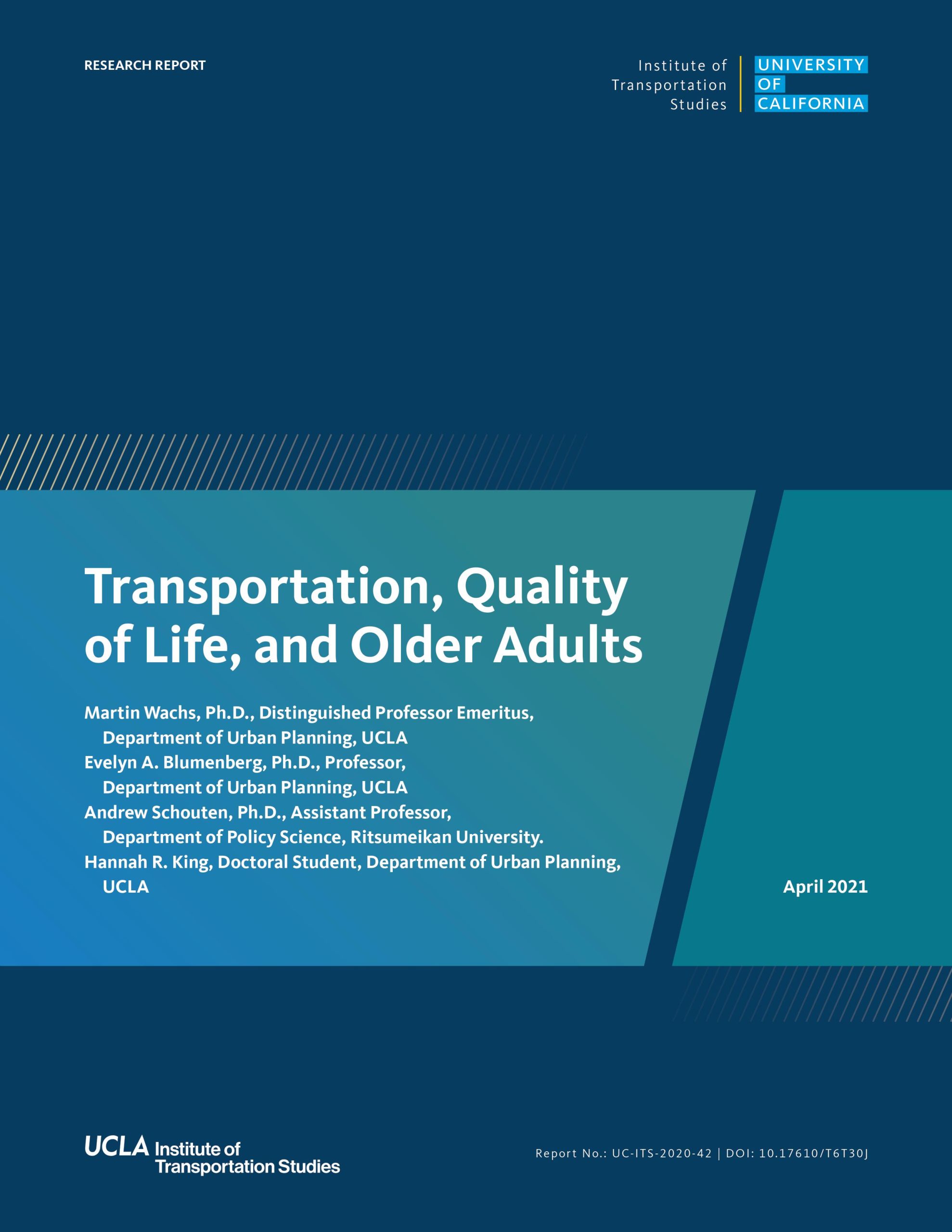Date: April 5, 2021
Author(s): Martin Wachs, Evelyn Blumenberg, Andrew Schouten, Hannah King
Abstract
Driving rates decline with age as vision, health, and cognitive ability cause some older adults to give up driving. Many older adults first gradually limit their driving as they age and later cease driving. Using data from the Health and Retirement Study (HRS), which surveys 22,000 older Americans every two years, we modeled the extent to which older drivers limit and stop driving. The data are longitudinal, allowing analysis of changes in driving and residential location as well as cohort effects that could not be studied using standard, cross-sectional survey data that only allow comparisons of different people at one point in time. The analysis shows that decisions to limit and eventually stop driving vary in statistically significant ways with sex, age, and health conditions. These relationships also differ by birth cohort. More recent cohorts are less likely to stop and limit driving than older ones. To analyze the relationship between residential location and driving behavior, we linked the HRS data to census-tract level data from the US Census and a categorization of community types. We found that residential density and other urban built environment features are associated with changes in driving and vehicle ownership. HRS survey participants showed a greater propensity to reduce or give up driving if they resided in denser, more diverse, transit-oriented neighborhoods. People who prefer non-automotive modes of transportation may have been more likely than others to self-select into walkable and transit-rich areas. The findings should inform California’s strategic planning for aging and its community development policies. In addition to informing planning for the next generation of older Californians, this study demonstrated the utility of longitudinal information and models for the understanding of older populations and their travel.
About the Project
California is growing faster and aging more rapidly than America as a whole. California’s population aged 60 years and over is expected to grow more than three times as fast as the total population. Older adults age in place – increasingly in suburban areas where access to transit and pedestrian-friendly neighborhoods is limited. Data from the 2017 National Household Travel Survey show that people over age 65 made 86% of their trips by automobile; 66% as drivers. As they age, however, many older adults limit their driving and ultimately lose the ability to drive altogether, affecting their quality of life in old age. This study explores relationships between aging, travel, mobility and residential relocation using a unique longitudinal database rarely before used in transportation research, the Health and Retirement Survey, augmented by other measures, such as transit accessibility.


